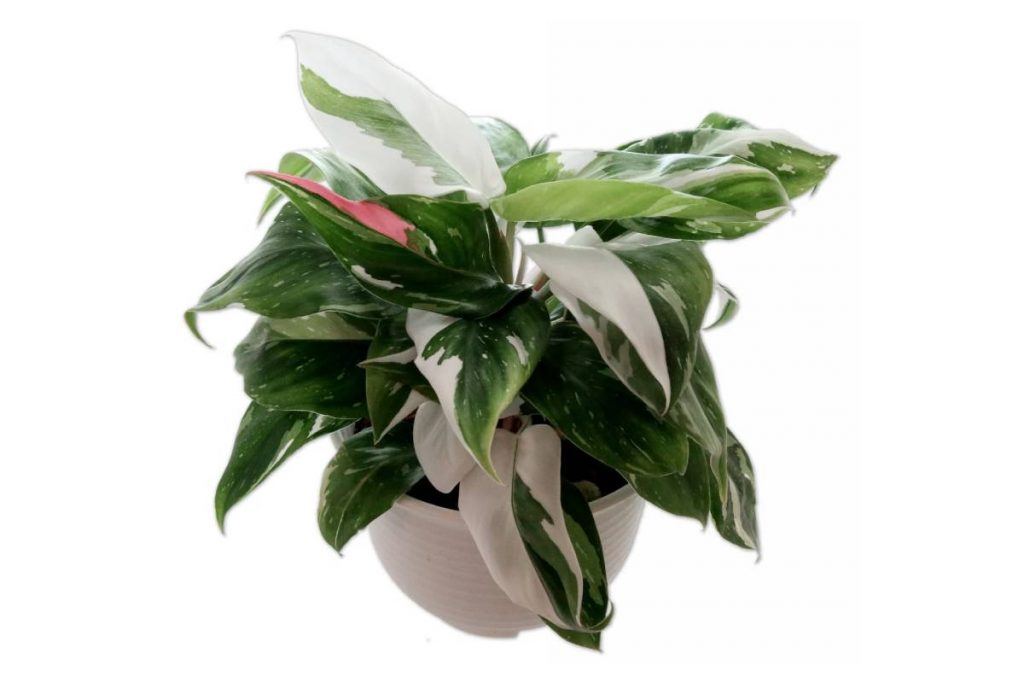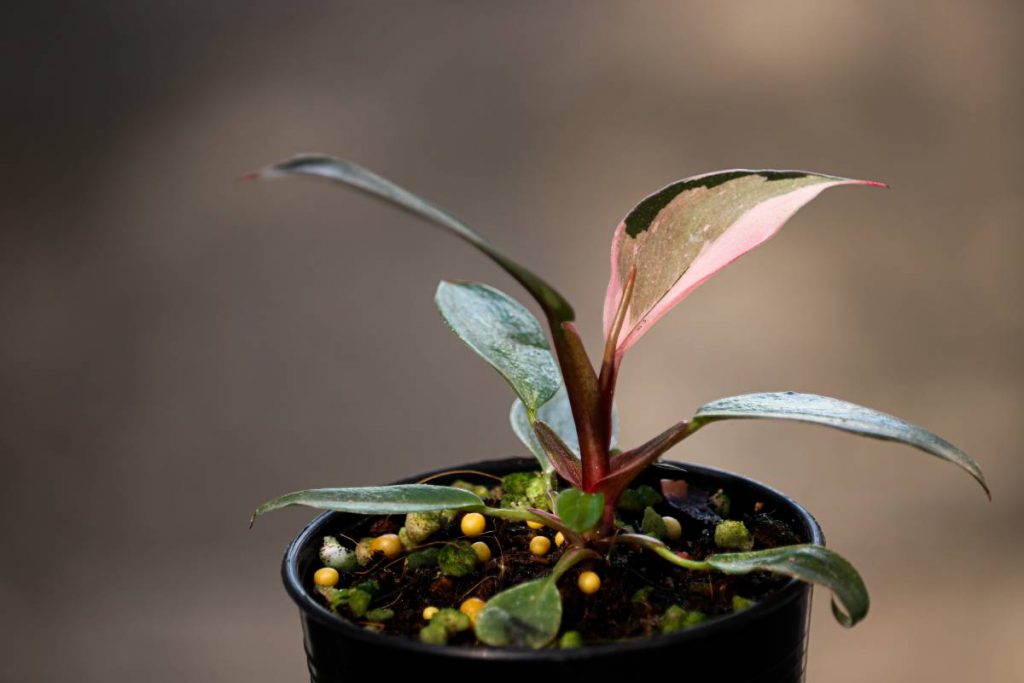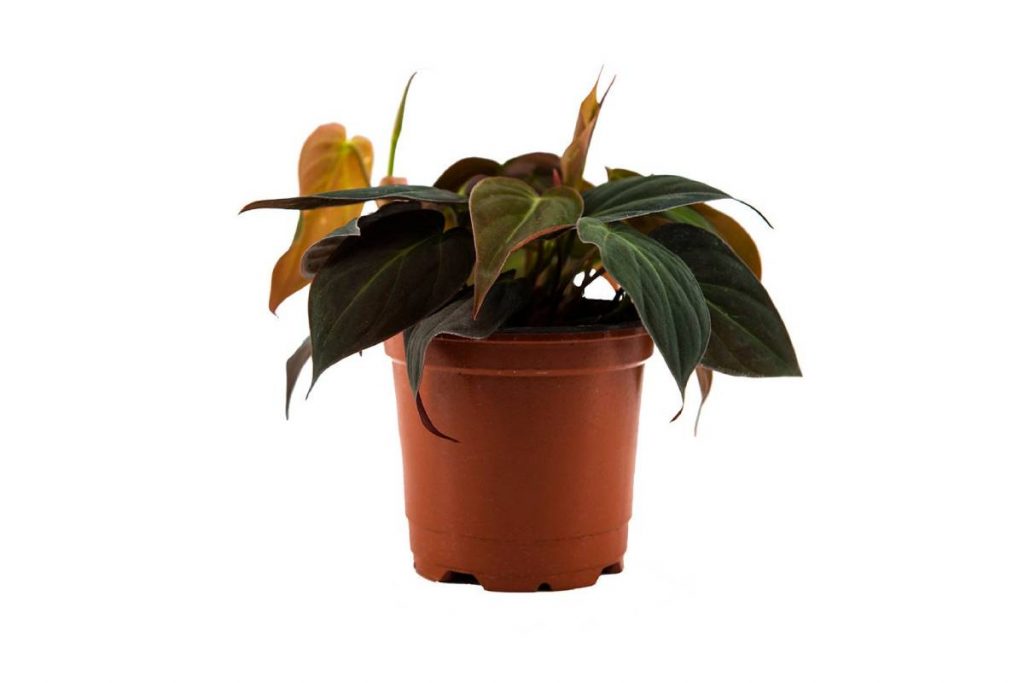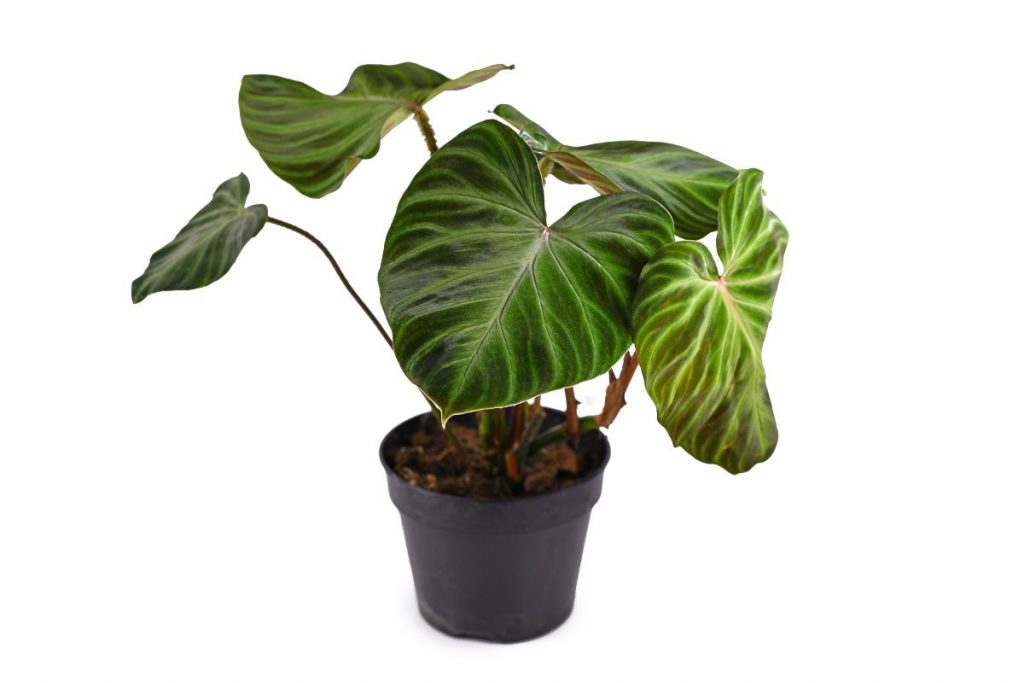Philodendron white wizard is among the most popular – as well as the rarest – variegated philodendrons. This variety is pure white, which also targets the leaves and stems. Given the variegation, each plant is unique – you may find a variety from one leaf to another.
The plant is considered an intermediate tropical plant, meaning you can grow it in warm and even temperate conditions, yet cold climates or seasons require special care – you might need to take it inside. Now, what else should you know about its care?
What is Philodendron White Wizard
The rare profile of this plant makes it well appreciated all over the world. It has unique cordate leaves, and all of them feature some white splashes – hence the name. The white variegation will most likely occur on the stem as well. This is one of the factors that make the plant unique.

In its natural habitat – tropical parts of the world, philodendron white wizard looks like a vine. However, you can also grow it indoors – you may have to trim it now and then to retain its bushy appearance. Otherwise, it could get out of control.
Some may see it as good news, while others may dislike that it grows very slowly. To see a young plant thrive, you must give it time – it is worth it, though. Plus, even the growing stage will give you a nice appearance.
Given the rarity of this plant, there is not too much known about its history. It originates from South America – the tropical parts. However, it has spread worldwide and can be grown in other climates too.
Now that you have a few clues about the philodendron white wizard, what should you know about its care?
How to Care Philodendron White Wizard
Because it is rare and hard to find, philodendron white wizard is not a pretentious plant. Sure, in an ideal case, it should be grown in an environment that imitates its natural habitat – a tropical climate. However, it can also be quite forgiving with a little care.
Light
Philodendron white wizard will thrive in a bright environment, yet it does not necessarily like direct sunlight. Instead, give it indirect light – if you grow it indoors, place it against a window facing east or west. It will get a fair amount of light without being exposed to too much of it.
If you have issues finding the perfect place indoors, partial shade is much better than direct sunlight. With these thoughts in mind, it will do better in your bedroom than in the middle of your garden. The same rule applies if you want to grow it outdoors – give it partial shade and keep it out of direct sunlight.
Water
While many plants can be quite forgiving and will do well if you overwater them a little, philodendron white wizard is different. This is one of its most common issues, hence the necessity of doing your homework.
Although many plants can die if they lack water, philodendron white wizard would rather has less water than too much of it. Watering it too frequently will most likely cause more harm than good. Generally speaking, you should water it about once a week when the top half of its soil is dry.
Soil
Like every plant in this family, philodendron white wizard will grow faster than normally in well drained soil. There is a fine line between well-drained soil and wet soil, though. Well drained soil allows the water to go through, but it does not mean that you need to water it too much – you can cause plenty of harm.
Philodendron white wizard is quite flexible too. Sure, the soil is ideal, but it can do very well in other mediums. For example, you can find it in peat moss in its natural environment, while some growers rely on perlite to help it thrive. Soil is the best choice, though – just to play it safe.
Temperature
Philodendron white wizard is native to tropical areas, meaning a warm climate is desired for its growth. Ideally, you should keep this plant in mild or warm environments. Ideally, the temperature should float between 65 and 75 degrees Fahrenheit – small exceptions are allowed, but not for too long.
Regarding exceptions, this small plant is quite rough and can take temperatures down to 55 degrees and up to 100 degrees. However, if the temperature exceeds the ideal range, it will stop growing. It will not die, but it will not thrive either.
Humidity
Humidity requirements are mild – nothing too specific. Obviously, it is more likely to grow if the humidity imitates a tropical environment. But generally, normal humidity in your area will usually be enough for its growth unless you live in a super dry climate.
If you have to choose between plenty of humidity and dryness, go for humidity instead. Moderate conditions will not stop the growth but slow it down a little. The good news is there are plenty of strategies to imitate the humidity standards in a tropical climate.
For example, you could get an indoor humidifier to ensure the environment has plenty. A pebble tray can be just as helpful. Clustering plants together will also help, as plants will retain humidity in such an environment. All plants in a cluster should prefer humidity, though.
Fertilizing
Since philodendron white wizard is not a rapid grower, you can boost it up with the right fertilizer. When using fertilizer, make sure you get something appropriate for it – also, follow the instructions regarding dosage and frequency.
Most indoor plants will do very well with liquid fertilizers. Moreover, you can also opt for organic fertilizers rather than chemicals. They will provide plenty of nutrients without causing any negative effects or killing the plant.
If you can only find chemical fertilizers, they will also work, but they require plenty of extra care. Too much fertilizer can kill the plant, especially if you add it during the dormant phase. Keep it to a minimum and always follow the instructions.
Height and Growth Rate
Overall, the plant can reach a maximum height of 47 inches. However, most plants will usually grow up to 32 inches in height. Leaves can also vary in size – anywhere between 10 and 14 inches in length. It depends on how you look after it and the growing conditions.
As for the growth rate, while most philodendrons can grow up to four inches a week, the philodendron white wizard is normally a slow grower. It can reach this height over four weeks instead – again, it depends on the environment and growing conditions.

Flower
Philodendron white wizard – as well as other plants in this family – are flowering plants. If you plant it indoors, they will fail to bloom too often – occasional blooming is quite common, though. It depends on how you look after it.
The plant will give extraordinary flowers when grown outdoors – especially in a tropical climate. They are white and represent a vital part of the reproductive cycle. Flowers last for quite a while, and they are the main reason wherefore so many people prefer this plant.
How to Propagate Philodendron White Wizard?
Despite being rare, philodendron white wizard is fairly simple to propagate. Once you get a plant, you can easily develop more plants. Keep in mind that propagation is meant to be done during spring or summertime. You could do it in other parts of the year, but new plants may not survive.
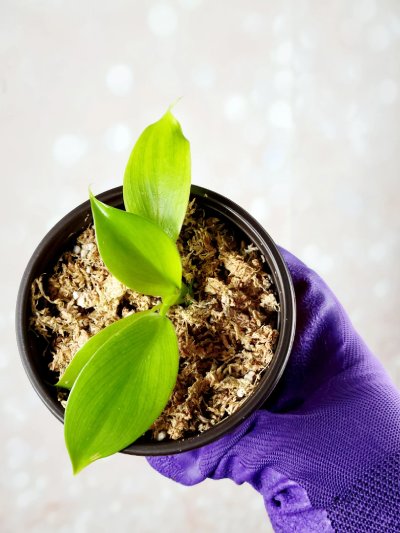
There are more options to propagate philodendron white wizard, but stem cutting is the most common one. You need to cut a few stems only – not more than eight inches in length. Get them in a soil mix with good draining capabilities and mist it regularly.
The new stem cuttings require the same care – indirect sunlight is the most popular location. Roots tend to start growing after about five weeks – it may take up to six weeks, so there is not much to worry about.
Philodendron White Wizard Repotting
Repotting philodendron white wizard is not difficult at all. Moreover, the plant can grow faster if you repot it yearly. Simply get a slightly larger pot – you might as well change all the soil. Refresh it, and it will grow faster.
Furthermore, apart from increasing the growth rate, repotting will bring in another benefit – a much higher rate of nutrient absorption. This is actually the reason wherefore the plant grows faster once you repot it – so do it once a year, at the same time every year.
On the same note, repotting philodendron white wizard will also provide extra growing space for the root system. After all, as it grows, the root system will also gain in size – all these things together for successful growth.
Is Philodendron White Wizard Poisonous?
Philodendron white wizard – as well as other plants in this family – are not considered lethally toxic. They are not considered too safe either. They are not suitable for human consumption, and while they are not toxic for animals, they should not be ingested either.
Philodendron white wizard is rich in oxalates, which is considered a poisonous element for humans and animals. If you do touch it, ensure you wash your hands after – allergic reactions are quite common.
Toxicity is mild – as well as the symptoms, but they should not be neglected.
Common reactions include irritation and swelling, especially around the mouth.
Pests and Diseases
Pests and diseases are similar for all philodendron plants. You should be careful when it comes to mealybugs and aphids. Some common issues include root rot and bacterial leaf spot. Keep an eye out for them.
If you see an affected plant, isolate it for about a week. Check them out every few days for pests. Get rid of dying leaves, too, and wipe down leaves if they get dusty. Keep plants healthy overall, and they will handle infestations without too much hassle.
Common Problems
Just like other plants out there, philodendron also has some common problems. Become familiar with them, and you will be able to handle potential issues without too many. Here is what might go wrong with your plant.
Leaves Turning Yellow
More causes may force leaves to turn yellow, but most importantly, improper soil moisture is the main issue. Overwatering plants is highly contraindicated yet, a very common issue among those who do not research care and maintenance necessities.
Leaves Turning Brown
Brown spots are quite common in philodendron white wizards. The issue occurs due to fungal infections. However, spots tend to spread, and whole leaves are affected. These infections occur when the plant is exposed to too much water or light. Low humidity and excessive fertilizing can also cause issues.
Leaves Falling Off
There could be more causes for the philodendron white wizard to lose its leaves. Most of these causes are the results of poor maintenance. Knowing how to look after your plants can prevent these problems – they do not occur overnight but in the long run.
Underwatering and overwatering are the main reasons. Make sure you have a proper watering schedule. Do it usually once a week – it depends on the humidity too. Usually, you need to do it when the top half of the soil is dry.
Final Words
In short conclusion, the philodendron white wizard is a beautiful plant that does not require too much maintenance. It is rare and difficult to find, but once you get it, it is easy to look after – propagating it is just as easy.
Pay special attention to its requirements in terms of lighting and watering, and there should be no issues whatsoever. In fact, most problems and diseases are usually caused by poor maintenance from the plant owner.
